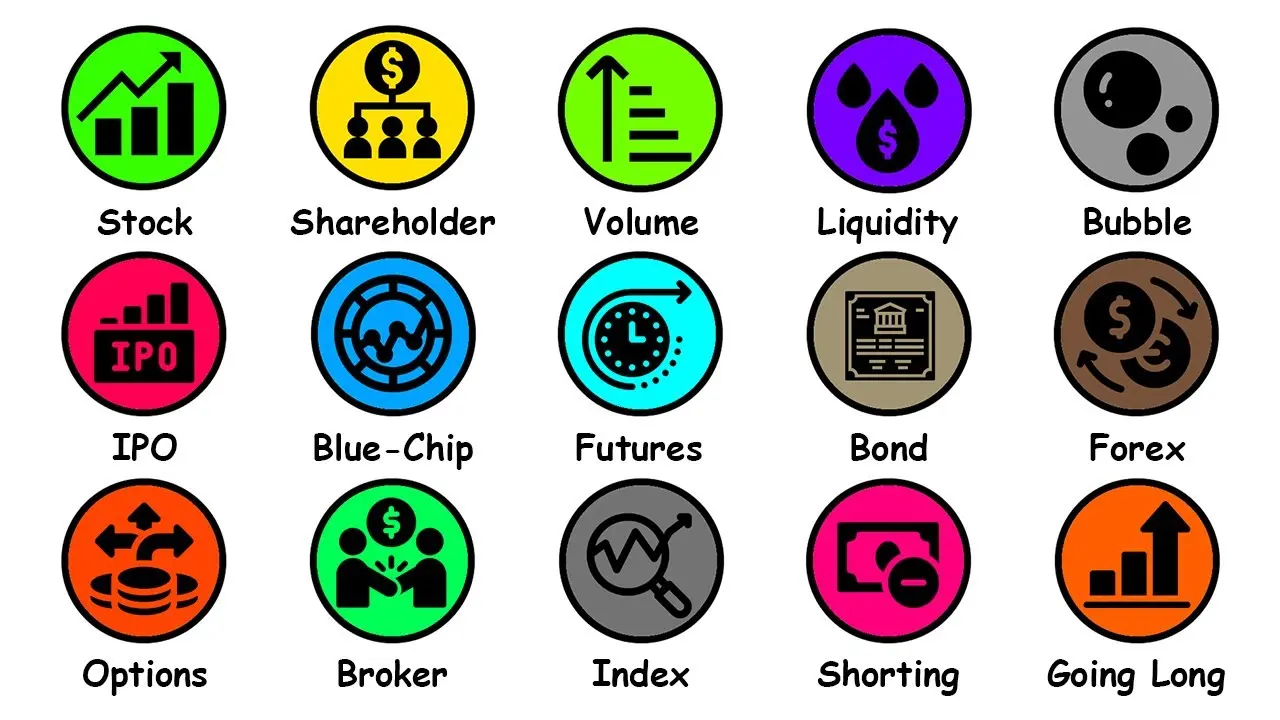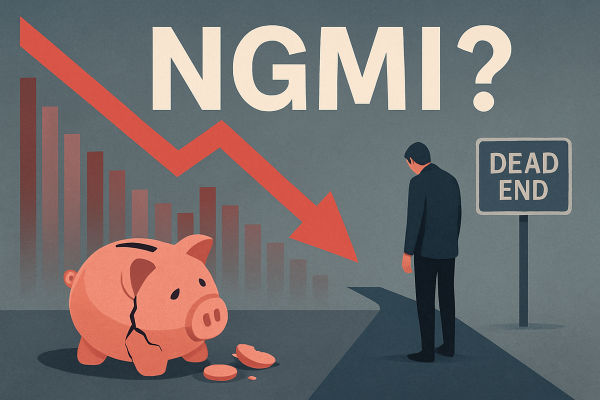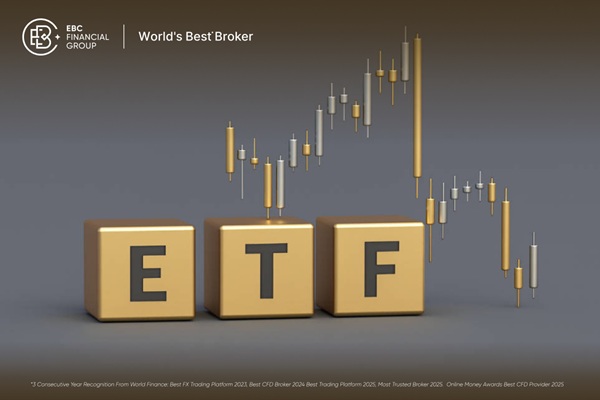For new investors, navigating the stock market can feel like learning a new language. Terms like "bull market," "blue chip," or "P/E ratio" may appear confusing at first, but understanding these core concepts is crucial for making better investment decisions.
This beginner-friendly guide covers the top 50 stock market terms every aspiring investor should know. Whether you're trading online for the first time or simply looking to build financial literacy, mastering these definitions will help you feel more confident and informed.
Why Stock Market Terminology Matters

Before diving into the list, let's clarify why learning stock market vocabulary is essential:
Better decision-making: You'll understand what analysts and news headlines mean.
Improved communication: Speak the same language as brokers, advisors, or fellow investors.
Reduced risk: Know the terms behind strategies, metrics, and market moves before investing real money.
Let's explore these 50 terms by category for easier understanding.
Top 50 Stock Market Terminology for Beginners

1. Market Basics: Understanding the Foundation
These terms explain the structure and behaviour of the financial markets.
1. Stock Exchange: A platform where stocks are bought and sold (e.g., NYSE, NASDAQ).
2. Ticker Symbol: A short code that identifies a stock (e.g., AAPL for Apple).
3. Market Capitalisation: The total value of a company's shares (price × shares outstanding).
4. IPO (Initial Public Offering): When a private company sells shares to the public for the first time.
5. Share: A unit of ownership in a company.
6. Bull Market: A period of rising stock prices, often fueled by optimism.
7. Bear Market: A prolonged period of falling stock prices, signalling pessimism.
8. Volume: The number of shares traded during a specific time.
9. Volatility: The degree of variation in a stock's price over time.
10. Index: A benchmark representing a group of stocks, like the S&P 500 or Dow Jones.
2. Investment Types: Stocks, Bonds, and More

Investors have several types of assets they can buy and hold.
11. Common Stock: Represents ownership in a company, with voting rights.
12. Preferred Stock: A stock type with fixed dividends but usually no voting rights.
13. ETF (Exchange-Traded Fund): A basket of securities traded like a stock.
14. Mutual Fund: A professionally managed investment fund that pools money from multiple investors.
15. Bond: A loan to a government or company that pays interest over time.
16. Dividend: A portion of a company's profits paid to shareholders.
17. Blue Chip Stock: Shares of large, established, financially stable companies.
18. Growth Stock: A company expected to grow earnings faster than average.
19. Value Stock: A stock considered undervalued compared to its fundamentals.
20. Penny Stock: A low-priced, high-risk stock, often under $5 per share.
3. Orders and Trading Terms
Understanding trade execution helps manage risk and control timing.
21. Market Order: A request to buy/sell a stock immediately at the best available price.
22. Limit Order: An order to buy/sell a stock only at a specific price or better.
23. Stop Order (Stop-Loss): Triggers a market order when a stock reaches a specified price.
24. Bid Price: The highest price a buyer is willing to pay.
25. Ask Price: The lowest price a seller will accept.
26. Spread: The difference between the bid and ask price.
27. Day Order: An order valid only during the trading day.
28. Fill or Kill (FOK): An order that must be executed immediately or cancelled.
29. Short Selling: Betting that a stock's price will fall by borrowing and selling it, then rebuying later.
30. Margin: Borrowing money from a broker to buy securities.
4. Performance Metrics and Valuation

These terms help analyse a stock's value and profitability.
31. P/E Ratio (Price-to-Earnings): A company's stock price divided by its earnings per share (EPS).
32. EPS (Earnings Per Share): Net earnings divided by the number of shares outstanding.
33. ROE (Return on Equity): A measure of a company's profitability using shareholder equity.
34. Dividend Yield: Dividend per share divided by the stock's price, expressed as a percentage.
35. Market Cap-to-GDP: A valuation indicator comparing a country's total market cap to GDP.
36. PEG Ratio: Price/Earnings divided by growth rate, used for growth stock valuation.
37. Book Value: The net asset value of a company.
38. Beta: Measures a stock's volatility relative to the market.
39. Free Cash Flow: Cash generated after capital expenditures, indicating financial health.
40. EBITDA: Earnings before interest, taxes, depreciation, and amortisation; a profitability measure.
5. Market Participants and Roles
Different players drive activity in the financial markets.
41. Retail Investor: An individual investor trading with personal funds.
42. Institutional Investor: Large entities like pension funds or mutual funds investing at scale.
43. Broker: An intermediary who executes trades on behalf of investors.
44. Market Maker: A firm providing liquidity by buying/selling from its own inventory.
45. Analyst: A professional who studies securities and gives investment recommendations.
6. Technical Analysis Tools
Technical analysis includes charts, patterns, and indicators.
46. Moving Average (MA): A stock's average price over a period, smoothing volatility.
47. RSI (Relative Strength Index): A momentum indicator measuring price movement strength.
48. MACD (Moving Average Convergence Divergence): Shows trend direction and momentum.
49. Support and Resistance: Price levels where a stock historically stops falling/rising.
50. Candlestick Chart: A chart style showing open, high, low, and close prices in one visual.
How to Use These Terms as a New Investor
Understanding the definitions is only the first step. The real value comes from applying these terms while:
Reading financial news and interpreting headlines or reports.
Analysing your portfolio and making strategic adjustments.
Watching the market and learning how real-time data relates to these terms.
For example, if an analyst says a company is "undervalued with a low P/E and strong free cash flow," you'll know this suggests a value stock with good fundamentals.
Likewise, if you're using RSI and support/resistance levels to time entries, you're beginning to implement technical analysis.
Common Mistakes to Avoid
Even after learning the terminology, new investors often fall into avoidable traps:
Overtrading without strategy: Just because you understand order types doesn't mean you should place trades impulsively.
Chasing hype: Understanding what an IPO is does not imply that every IPO is a good investment.
Ignoring risk: Concepts like "margin" and "short selling" include leverage, which can amplify losses when misconceived.
Focusing solely on price: The stock price by itself isn't a valuation measure; consider using ratios such as P/E, EPS, and ROE.
Steer clear of these mistakes by adopting a balanced strategy that incorporates education, research, and patience.
Conclusion
In conclusion, learning the top 50 stock market terminologies is like gaining a passport to the financial world. With these definitions in your toolkit, you'll manoeuvre brokerage platforms with greater ease, comprehend analyst reports and market updates, and start crafting your own investment strategy.
However, the journey doesn't stop here. As markets evolve, so does the language of investing. Keep reading, stay curious, and never stop learning.
Disclaimer: This material is for general information purposes only and is not intended as (and should not be considered to be) financial, investment or other advice on which reliance should be placed. No opinion given in the material constitutes a recommendation by EBC or the author that any particular investment, security, transaction or investment strategy is suitable for any specific person.






























